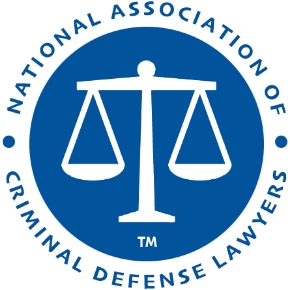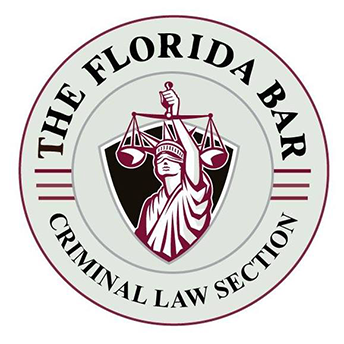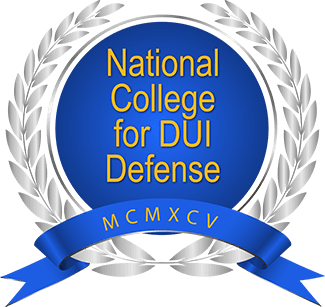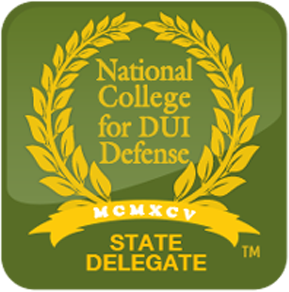Vicious or Dangerous Dog Citations
What happens if you receive a citation for having a vicious or dangerous dog? Even for a first (1st) citation alleging a vicious dog violation, if you contest the citation, the applicable civil penalty is $520 and other consequences apply.
If you do not contest the citation, you must pay the total penalties within 30 days of issuance of the citation for a vicious dog violation. At least in Hillsborough County, FL, the citation might reference Hillsborough County Animal Ordinance Section 6-27A for having a vicious dog or Section 6-27B for having a dangerous dog.
The biggest problem that results from a citation for a dangerous dog is that the violation constitutes proof of “prior knowledge of a dog’s dangerous propensities” under F.S. § 767.13(2). So if the dog attacks anyone or otherwise causes any injury thereafter, then the owner might be charged with a crime.
The court might also decide whether the dog should be destroyed if Florida Statute §767.12(5)(b) applies. When it is alleged that a dog meets the definition of “Dangerous Dog” pursuant to Florida Statute §767.11(1)(a) and “has aggressively bitten, attacked [and] inflicted severe injury” on a person, then the court might consider whether the dog should be destroyed “based upon the nature and circumstances of the injury and the likelihood of a future threat to the public safety, health, and welfare.” Fla. Stat. §767.12(5)(b).
As a practical matter, the legal consequences of owning a vicious or dangerous dog are so severe, that most owners have little choice other than to euthanize the dog even if the court does not order the dog to be destoyed. If the dog owner fails to take the appropriate steps to protect the public, then animal control services might take additional action.
Attorneys for Vicious or Dangerous Dog Citations in Hillsborough County, FL
The attorneys at Sammis Law Firm are experienced in working with the Animal Control Officers in Hillsborough County, FL. We can help you find the best way to resolve the case, especially if the allegations against the dog are unfounded.
Unfounded accusations occur when the act or injury was not caused by the dog, or the act or injury only occurred after the dog was provoked.
Because evaluating these cases is complicated and time-consuming, we charge a $400 consultation fee for a one-hour consultation to review the citation, discuss the facts of the case, and explain your options to contest the allegation.
Call 813-250-0500.
Definition of Terms in Florida’s Animal Control Statutes
For purposes of the laws and ordinances related to the licensure or control of animals, the term “owner” is defined in F.S. § 767.11(7) to mean:
“any person, firm, corporation, or organization possessing, harboring, keeping, or having control or custody of an animal or, if the animal is owned by a person under the age of 18, that person’s parent or guardian.”
Under F.S. § 767.11(2), the term “unprovoked” is defined to mean “that the victim who has been conducting himself or herself peacefully and lawfully has been bitten or chased in a menacing fashion or attacked by a dog.”
Under F.S. § 767.11(3), the term “severe injury” means any physical injury that results in broken bones, multiple bites, or disfiguring lacerations requiring sutures or reconstructive surgery.
Under F.S. § 767.11(4), the term “proper enclosure of a dangerous dog” is defined to mean “while on the owner’s property, a dangerous dog is securely confined indoors or in a securely enclosed and locked pen or structure, suitable to prevent the entry of young children and designed to prevent the animal from escaping. Such pen or structure shall have secure sides and a secure top to prevent the dog from escaping over, under, or through the structure and shall also provide protection from the elements.”
What is an “Animal Control Officer”?
According to F.S. § 767.11(6), an animal control officer works for the animal control authority to help enforce laws and ordinances related to:
- licensure of animals;
- control of animals; or
- seizure and impoundment of animals.
Under F.S. § 767.11(5), the term “animal control authority” refers to an entity, usually authorized by the county government, to enforce the animal control laws of the city, county, or state. For any area not served by an animal control authority, the sheriff of that county is given the task of carrying out the duties of the animal control authority.
Hillsborough Ordinance Section 6-27(a) for Vicious Animals
In State v. Harriman, 75 Me. 562, 46 Am. Rep. 423, as quoted in Roos v. Loeser, 41 Cal.App. 782, 183 P. 204 (Cal.App. 1st Dist., 1919), the court noted that dogs are generally noble:
He is the friend and companion of his master, accompanying him on his walks; his servant, aiding him in his hunting; the playmate of his children, an inmate of his home, protecting it against all assailants.
Despite the nobility of dogs, they sometimes bite or behave in an aggressive manner without being provoked.
Section Sec. 6-20 defines the term “vicious animal” to mean “a dog or cat that when unprovoked has bitten, attacked, endangered, or inflicted injury on a human, or domestic animal while on public or private property; or has chased or approached a person upon the streets, sidewalks, or any public grounds in a menacing fashion or apparent attitude of attack.”
Section 6-27(a) of the Hillsborough County Ordinances addresses “vicious animals.” This county ordinance prohibits any person from allowing a companion animal, when unprovoked, to:
- bite, attack, endanger, or inflict injury on a human, domestic animal, or livestock while on public or private property; or
- chase or approach an individual upon the streets, sidewalks, or any public grounds in a menacing fashion or apparent attitude of attack.
The biggest problem that results from this citation is that a violation may constitute proof of “prior knowledge of a dog’s dangerous propensities” under F.S. § 767.13(2), as may be amended.
Hillsborough Ordinance Section 6-27(b) for Dangerous Dogs
Section 6-20 defines the term “dangerous dog” in accordance with F.S. § 767.11, as may be amended. The Florida legislature, when enacting the underlying dangerous dog statute in Section 767.10, Florida Statutes, explained the purpose of the statute as follows:
The Legislature finds that dangerous dogs are an increasingly serious and widespread threat to the safety and welfare of the people of this state because of unprovoked attacks which cause injury to persons and domestic animals; that such attacks are in part attributable to the failure of owners to confine and properly train and control their dogs; that existing laws inadequately address this growing problem; and that it is appropriate and necessary to impose uniform requirements for the owners of dangerous dogs.
In turn, F.S. § 767.11(1) defines “dangerous dog” to mean “any dog that according to the records of the appropriate authority:
- (a) Has aggressively bitten, attacked, or endangered or has inflicted severe injury on a human being on public or private property;
- (b) Has more than once severely injured or killed a domestic animal while off the owner’s property; or
- (c) Has, when unprovoked, chased or approached a person upon the streets, sidewalks, or any public grounds in a menacing fashion or apparent attitude of attack, provided that such actions are attested to in a sworn statement by one or more persons and dutifully investigated by the appropriate authority.”
Section 6-27(b) of the Hillsborough County Ordinances addresses “dangerous dogs.” This county ordinance adopts the provisions of F.S. Ch. 767, as may be amended, pertaining to dangerous dogs.
So in Hillsborough County, FL, all restrictions, requirements, regulations, and procedures pertaining to dangerous dogs are applicable under state law are also applicable under the county ordinance.
Under Section 6-27(b)(1)e., any dog that is exempted from the provisions of F.S. Ch. 767, as may be amended, shall be exempt from the provision of this section.
Each day the owner of a dangerous dog fails to comply with the requirements of this section or the requirements of F.S. § 767.12, as may be amended, shall constitute a separate and distinct offense.
Consequences of a Severe Injury or Attack by a Dangerous Dog
Under Section 6-27(b)(2)(a), if a dog previously declared dangerous attacks or bites a human being or a domestic animal without provocation, in accordance with F.S. § 767.13, as may be amended, the owner is guilty of a criminal offense.
Under Section 6-27(b)(2)(b), the owner is responsible for payment of all boarding costs and other fees as may be required to humanely and safely keep the dog during the pendency of any hearing or appeal procedure, as well as any and all investigative fees accrued by the Department.
Under Section 6-27(b)(2)(c), if the owner files a timely written appeal, the Department may not destroy the dog while the appeal is pending, except to prevent unnecessary suffering as determined by two veterinarians.
How to Appeal a Dangerous Dog Decision within Seven (7) Days
Under Section 6-27(b)(1)a., the owner wishes to appeal the initial decision of the Department to a hearing master, he or she must file a written request with the Department Director for a hearing within seven days from the date of receipt of the notice of intent to declare the dog dangerous.
If requested, a hearing shall be held as soon as possible but not more than 21 calendar days and no sooner than five days after the Department’s receipt of the request.
Consequences of Owning a Dangerous Dog in Hillsborough County, FL
Under Section 6-27(b)(1)b., after a dog has been classified as dangerous or a dangerous dog classification is upheld on appeal, the owner of the dog must obtain a certificate of registration from the Department within 14 days, and the certificate must be renewed annually.
The Department will only issue certificates of registration and their renewals to individuals who are at least 18 years of age, pay the appropriate fee, and present sufficient evidence of the requirements provided for in F.S. § 767.12, as may be amended.
In addition to those requirements, the dog’s owner must take the following actions:
- Receive training provided by the Department on responsible pet ownership of dangerous dogs.
- Provide access to the property and the dog for no less than two inspections annually by the Department to verify compliance with the provisions of this article and F.S. Ch. 767, as may be amended;
- When outside their proper enclosure, dangerous dogs must be muzzled, restrained by a substantial chain or leash, and under the control of a competent person. In addition, the use of a physical control device such as a passive head restraint collar or harness recommended by the Department is required;
- Post approved signage obtained from the Department at intervals determined by the Department and at all entrances to the property;
- Provide the Department proof of a current health certificate for the dog issued by a veterinarian;
- Have the dog microchipped and registered to the owner at his or her current address;
- Register for, and attend to completion, dog obedience training from an instructor approved by the Department; and
- Sterilize the dog within 30 days of being declared dangerous.
Under Section 6-27(b)(1)c., the Department may provide notification to appropriate neighbors and the public advising them of the presence of a declared dangerous dog. Photographs of the dog may be used in providing the public with internet access to dangerous dog information.
Confiscation of a Dangerous Dog in Hillsborough County, FL
Under Section 6-27(b)(1)d., the Department may confiscate any dog classified as dangerous for euthanasia as a result of the owner’s failure to comply with any or all requirements of F.S. Ch. 767, as may be amended, or any requirement of this section.
Should the Department confiscate any dog under this section, a notice of sufficient cause to confiscate the animal shall be provided in writing to the owner in accordance with F.S. § 767.12, as may be amended.
The animal shall be held for ten business days after the owner is provided this written notice and thereafter destroyed in an expeditious and humane manner. This ten-day time period shall allow the owner to request a hearing under Section 6-44.
Strict Liability for Owning a Dangerous Dog
Florida law creates liability for dog owners. Since the passage of Chapter 3294, Acts of 1881, subsequently codified as Section 767.01, Florida Statues, it has been the law in Florida that owners of dogs are liable for damage done by them. See Romfh v. Berman, 56 So.2d 127 (Fla. 1951) overruled in part by Sweet v. Josephson, 173 So.2d 444 (Fla. 1965).
The statutory scheme effectively makes the dog owner an insurer under a strict liability standard. See Belcher Yacht, Inc. v. Stickney, 450 So.2d 1111 (Fla. 1984).
Furthermore, under Section 6-27(b)(1)f., any person who owns, harbors, or otherwise provides custody for a dangerous dog shall be responsible for any damage or injury caused by that dog, including, but not limited to veterinary or medical bills or property damage.
This article was last updated on Wednesday, June 23, 2021.














